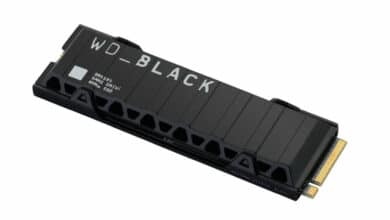
Data loss can be a heart-stopping experience, but fear not! With the right tools and know-how, you can often recover your precious files. Check more data recovery tutorials in this blog. Here are some essential tips and tricks to help you navigate the Data Recovery Toolbox and maximize your chances of getting your data back:
Before Data Loss Occurs
- Build your recovery toolkit: Having a data recovery software like the Data Recovery Toolbox installed on your computer beforehand can save precious time and frustration in case of data loss. It’s important to choose a reputable and reliable software like the one offered by GetData.
- Install to a USB flash drive: Installing the recovery software onto a separate drive, like a USB flash drive, ensures that you’re not accidentally overwriting the data you’re trying to recover. This is because installing the software onto the same drive as the lost data can further increase the risk of data loss.
After Data Loss Occurs
- Stop using the affected drive: The more you use the drive after data loss, the higher the chance of permanently overwriting the lost data. This includes saving new files, installing programs, or even browsing the internet.
- Choose the right search: Depending on how the data was lost, you may need to choose between a “quick scan” or a “deep scan.” A quick scan is faster but may not recover all lost data, while a deep scan is more thorough but takes longer.
- Preview before recovery: Most data recovery software, including the Data Recovery Toolbox, allows you to preview files before recovering them. This helps you ensure you’re recovering the right files and saves you time and storage space.
- Seek professional help: If you’re unsuccessful in recovering your data using the Data Recovery Toolbox or if you’re dealing with complex data loss scenarios, consider seeking professional data recovery services.
By following these tips and tricks, you can increase your chances of successfully recovering your lost data using the Data Recovery Toolbox. Remember, the sooner you take action, the better your chances of success.
What is data recovery techniques?
Data recovery techniques can be broadly categorized into two main types:
1. Logical Data Recovery
This approach deals with situations where the physical storage medium (hard drive, SSD, etc.) is intact, but the data itself is inaccessible due to logical issues like:
- Accidental deletion: This is the most common scenario where files are mistakenly deleted.
- Formatting: Formatting a drive erases the file system information, making files inaccessible through normal methods.
- Partition loss: Partitions can become corrupt or lost, making the data within them inaccessible.
- File system corruption: Damage to the file system can prevent the operating system from recognizing and accessing files.
Logical data recovery techniques typically involve software tools that scan the storage device for recoverable data based on file signatures, directory structures, and other indicators. These tools can then attempt to reconstruct and recover the lost files.
2. Physical Data Recovery
This technique is used when the physical storage medium itself is damaged or malfunctioning, such as:
- Physical damage: This can include scratches on hard drives, or physical damage to flash memory chips.
- Head crashes: In hard drives, the read/write head coming into contact with the platters can cause data loss.
- Electronic failure: Electrical issues within the storage device can render data inaccessible.
Physical data recovery is a complex and often expensive process that requires specialized equipment and expertise. It’s typically used as a last resort after logical recovery attempts have failed.
Here are some additional points to remember about data recovery techniques:
- The success rate of any data recovery technique depends on the severity of the data loss and the condition of the storage medium.
- It’s crucial to stop using the affected device as soon as possible after data loss to prevent further damage and increase the chances of recovery.
- Regularly backing up your data is the most effective way to prevent data loss and avoid the need for recovery altogether.



